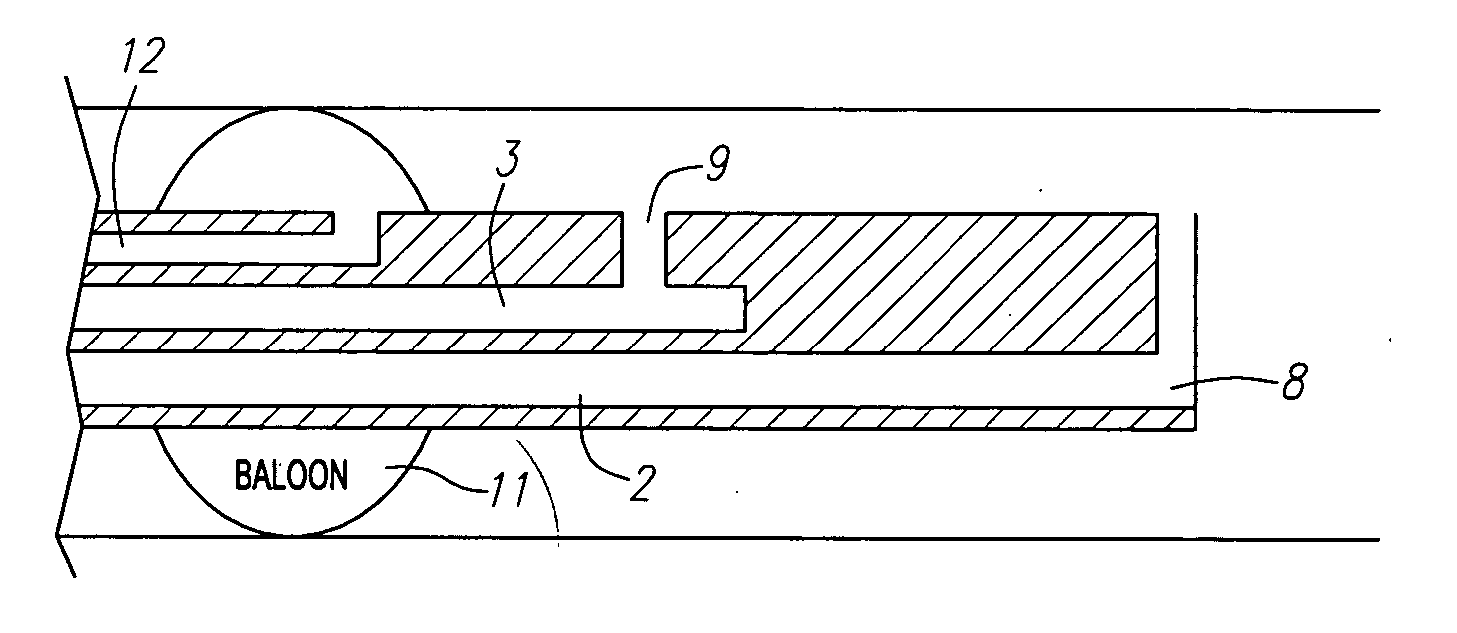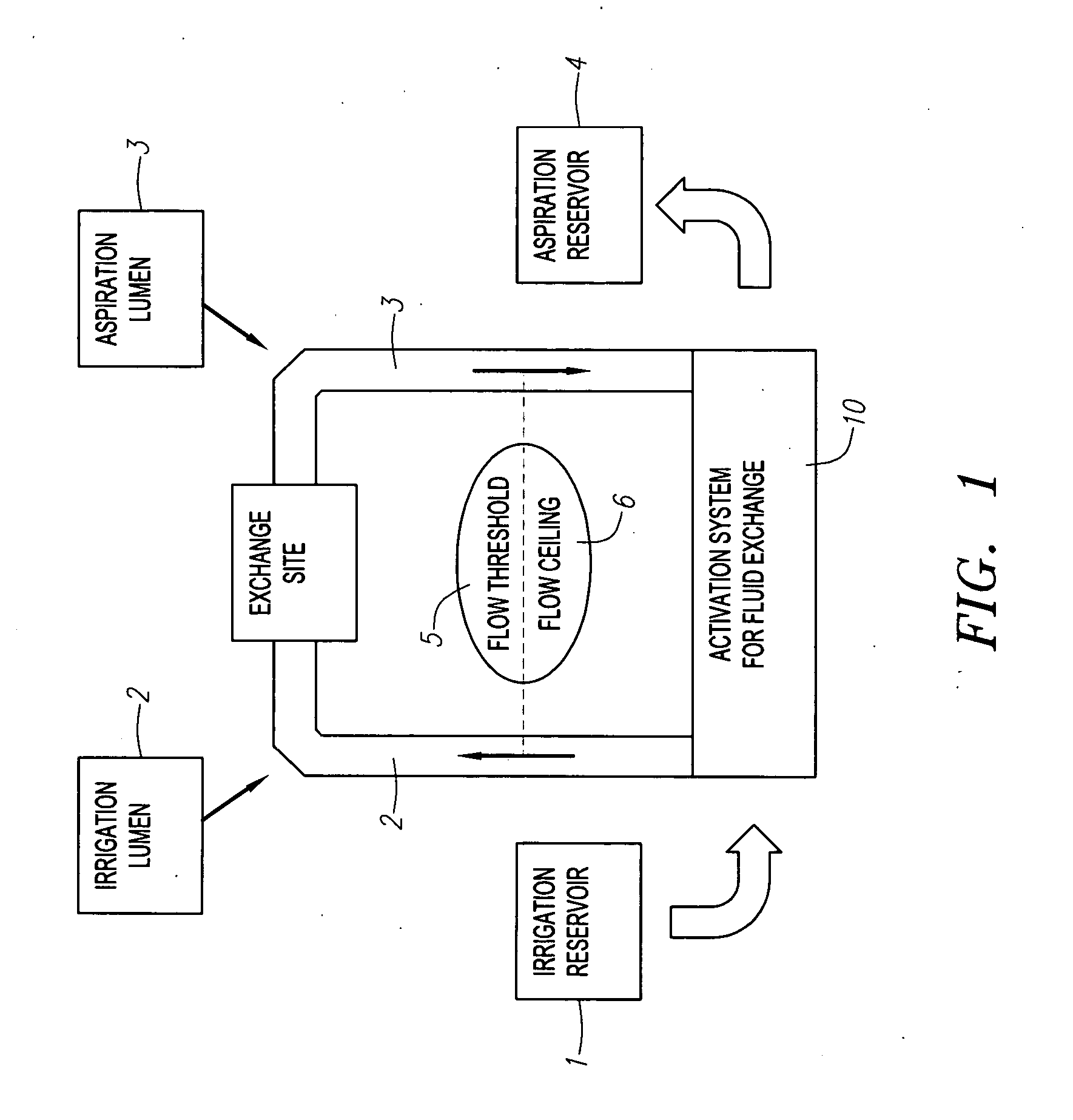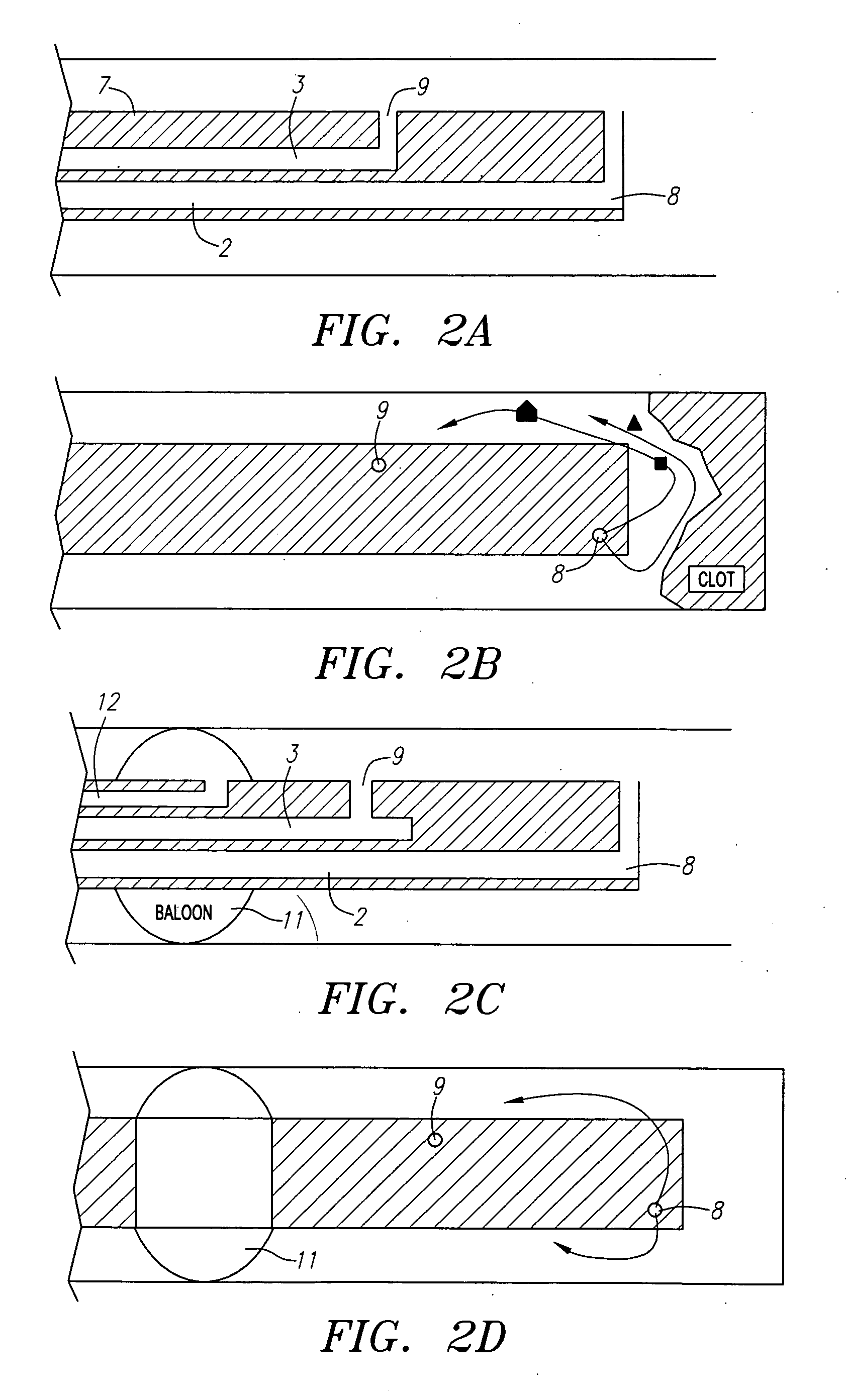Catheter-based
irrigation and aspiration systems are unique in many respects due to their use in clinical situations where blockages or lesions exist inside a
blood vessel, such as a coronary or carotid
artery, and dangers arise from the creation and release of tiny particles of debris called “emboli” within the vessel.
However, while each of these procedures offers therapeutic value in treating the
lesion, each carries the risk of creating emboli during the procedure.
In addition to the creation of emboli, there exists the risk of microemboli, thrombotic or otherwise in nature, which can cause substantial blockage of the microvasculature and
microcirculation resulting slow flow or no reflow phenomena.
In some cases, the basic performance of the procedure inherently creates emboli, whereas in other procedures, the manipulation of the vessel and the
insertion or removal of a therapeutic or diagnostic catheter is the cause of emboli generation.
As with any procedure conducted in the cardiovascular
system, the risk is particularly great where emboli created from plaque dislodged from inside a
blood vessel travel to the brain and cause serious brain injury or death.
For example, treating lesions of the carotid vessels in the neck necessarily involves high risk because any emboli that are created travel immediately to the brain.
Unfortunately, the process of moving a distal device through a clogged vessel and across a carotid
lesion can generate emboli that lead to a cerebral
ischemia or
stroke.
Moreover, studies have shown that crossing a carotid lesion with a structure as small as a
catheter guide wire can generate emboli.
Also, some lesions carry such a high risk of generating emboli that therapeutic treatments are attempted only in the most severe cases.
Where a chronic
total occlusion (an untreatable total blockage) exists, the diagnosis is particularly poor because it is impossible for medical personnel to place a structure beyond the point, or “distal” of the
occlusion, such that emboli generated by the removal of the
occlusion can be captured before entering the circulation of the bloodstream.
Such chronic total occlusions can only be treated by removing the
occlusion from the “proximal” side, where emboli removal is uniquely difficult.
Thus, even when a filter is used as an added safety feature, such systems cannot protect the patient against the
potential harm inherent in the placing the device itself.
This carries the risk that the filter will
impact the vessel and cause the release of emboli and / or contact the
stent and either displace the
stent or similarly cause the release of embolic particles at the end of the procedure.
However, the tissue of the inside walls of a vessel that is affected by a lesion is notoriously delicate and the treatment of the lesion has the capability to generate or release emboli whenever any mechanical manipulation of the portion of the vessel containing the lesion occurs.
Filters also have inherent drawbacks that cannot be completely eliminated.
Also, particles larger than the pore size tend to become trapped in the filter such that the filter itself becomes an occlusive element and
blood flow through the filter is impeded.
Disadvantages of a two-
balloon system also arise from the placement of balloons on both sides of a lesion and the nature of the
blood flow that occurs in the region of the vessel containing the lesion once the
balloon is removed.
This results from the disruption in the haemodynamics of the flow in the vessel due to the restriction caused by the lesion, resulting in further
disease downstream.
Thus, the use of any occluding member distal of a lesion does not eliminate the risk of creating emboli that may enter the vessel.
The risk is particularly great when a second
balloon is used because the balloon is not advantageously placed for the removal of emboli created by the use of the balloon itself and because the balloon must be removed by passing it across the lesion upon completion of a procedure.
This drawback is present in all circumstances when a balloon is advanced across a lesion because, when any occluding member is placed distally of the lesion, the occluding member must be drawn back across the lesion to remove the occluding member at the end of a procedure.
Also, the placement of two balloons requires additional time to inflate the second balloon and adds to the complexity of a device due to an additional lumen that must be incorporated into the catheter to inflate the balloon.
Because the second balloon is relied upon to prevent the flow of emboli past the region of the vessel containing the lesion, the failure of the balloon is a
critical event that threatens the health of a patient undergoing the procedure.
Furthermore, due to geometric constraints, the second balloon often acts as the guide wire as well.
When delivering tools to perform the therapeutic or diagnostic procedure within the vessel, the balloon may move and disrupt the vessel wall or compromise the retrieval of emboli.
Introduction of tools and other manipulations of a distally located balloon can also result in deflating the balloon or otherwise causing the balloon to lose patency on the interior of the vessel.
Anytime that a balloon is placed distal to a lesion, the contact between the balloon and the lesion carries the risk of damaging the vessel.
For example, to make the seal tight enough to prevent the passage of fluid and emboli past the balloon, the expansion of the balloon typically deforms the vessel outward and may disrupt plaque in and about the point of contact between the vessel and the balloon.
Moreover, any plaque that becomes dislodged outside the barrier formed by the balloon is released into the
blood stream because there is no mechanism distal of the balloon to remove the emboli.
For example, removal of fluid and / or embolic particles by simple suction from within a
body conduit may only remove a portion of the fluid present in the vessel and may leave emboli in place even if all of the fluid is removed and replaced.
Thus, a system that provides limited fluid exchange is particularly unlikely to achieve a complete removal of emboli.
Also, given that the interior walls of a vessel may have been contacted from within during a
therapeutic procedure, a
high likelihood exists that additional particles may be dislodged upon the establishment of a robust fluid flow through the vessel.
Under these circumstances, an even greater risk exists that plaques located downstream from the lesion will be dislodged and will enter the circulation causing serious injury.
A common feature of these structures that need medical intervention is a protected environment in which infectious pathogens can harbor and grow, can accumulate collections of toxic, pro-inflammatory and / or necrotic materials, can expand and cause mechanical interference, and can affect the proper functioning of their resident or neighboring tissues.
Abscesses that rupture can lead to recurrent infections or
septic shock.
Cysts can rupture, leading to hemorrhage, pain or
irritation.
Pleural effusions can limit the ventilation capacity of lungs.
However, the longer the catheters are left in place, the more time there is for an infection to occur as a result of
catheter insertion.
Pseudocysts can become very large and compartmentalized, can encroach on neighboring structures and can cause mechanical interference with
proper function.
 Login to View More
Login to View More  Login to View More
Login to View More 


